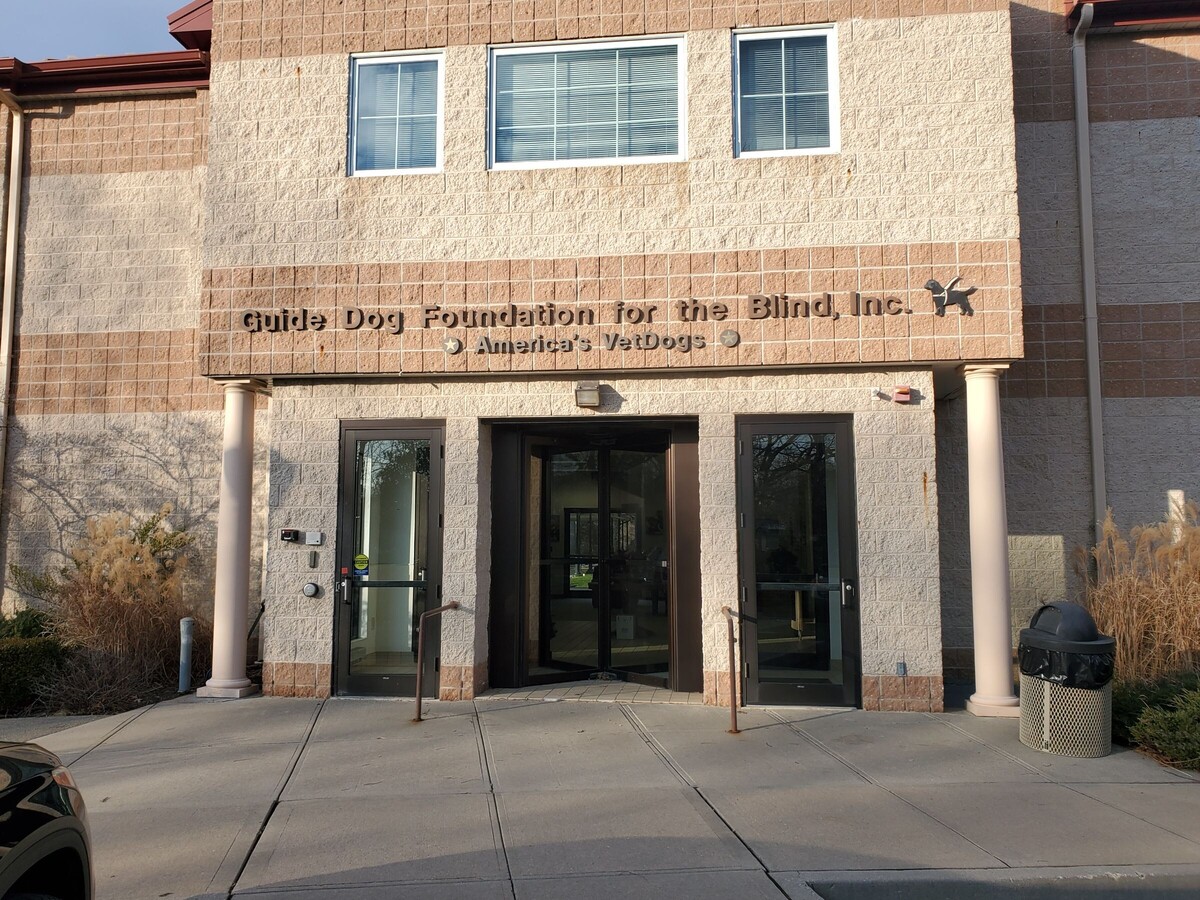Image

The Guide Dog Foundation is dedicated to training dogs for individuals who are blind or have low vision. America’s VetDogs, also a 501c(3) organization, provides dogs to America’s veterans to help them return to a life free from boundaries and restrictions. The two organizations share staff and other resources to ensure people with disabilities receive the best trained guide dogs possible.
The application to receive guide dog is comprehensive. Not only are potential recipients screened closely, but it’s also important to know the daily routine and environment that the dog will be encountering. However, once an applicant is accepted into the program, they are matched with a dog that is deemed appropriate for the needs of the individual. This begins what should be a long-lasting bond between the new owner and his or her service dog. Crossing the street independently becomes a moment of liberation and joy.
Lauren Cobb, a full-time certified trainer for the Guide Dog Foundation, is also one of four trainers currently on staff at the Smithtown location. Like the other trainers, she completed a three-year apprenticeship, before taking her qualification exams to become a certified trainer. Each trainer has three to four dogs under their care at one time. Laura became interested in the Guide Dog Foundation as a puppy trainer, while in college.
The 15-acre campus of the Foundation breeds its own puppies, about 400 per year. About half of those were deemed qualified to be adopted by “puppy trainers.” The preferred breeds are Labradors and Golden Retrievers, due to their exceptional temperaments. “They are often bred together,” said Cobb.
Puppy training is handled by volunteers in their homes, under specific guidelines and under the supervision of the Foundation. They are carefully screened before being assigned. “It is important that the puppies learn house manners and obedience,” said Cobb.
At about the age of one and a half, the pups come back to the center and go into an intense three-month training program, before they are assigned to a client, usually at the age of two. The longevity for a service dog is approximately eight years but can vary.
Since the campus has a dormitory, clients live at the facility for two weeks while they work with the trainers and the dogs. There is a cafeteria, snack area, lounge and a chef. There is space for 21 clients, however classes are typically four to 12 people.
At one point during my visit, Lauren introduced me to “Jasper,” a male Labrador in training. I accompanied Lauren and Jasper for an outside walk and observed how Jasper stopped at curbs, crossed streets and even stopped when encountering a low hanging obstacle, such as a flagpole. It was quite impressive to see Jasper at work. The campus is cleverly designed to resemble a suburban block.
The Americas VetDog Program was founded specifically for veterans, who are returning to civilian life with a disability, whether PTSD or some physical disability. Recently, the program was expanded to include police veterans and first responders. There is currently a one year wait time for a trained dog due to the demand.
Both the Guide Dog Foundation, which was founded in 1946, and America’s VetDogs, provide guide dogs and training to clients with a disability free of charge, to people who can benefit from having a trained service dog.
The Guide Dog Foundation and Americas VetDogs are fully funded by private and corporate donations, fundraising events, and occasionally a federal grant. There is a website, https://www.guidedog.org/, where visitors can learn about the program, donate or inquire about volunteering. The Foundation is located on East Jericho Turnpike, in Smithtown.